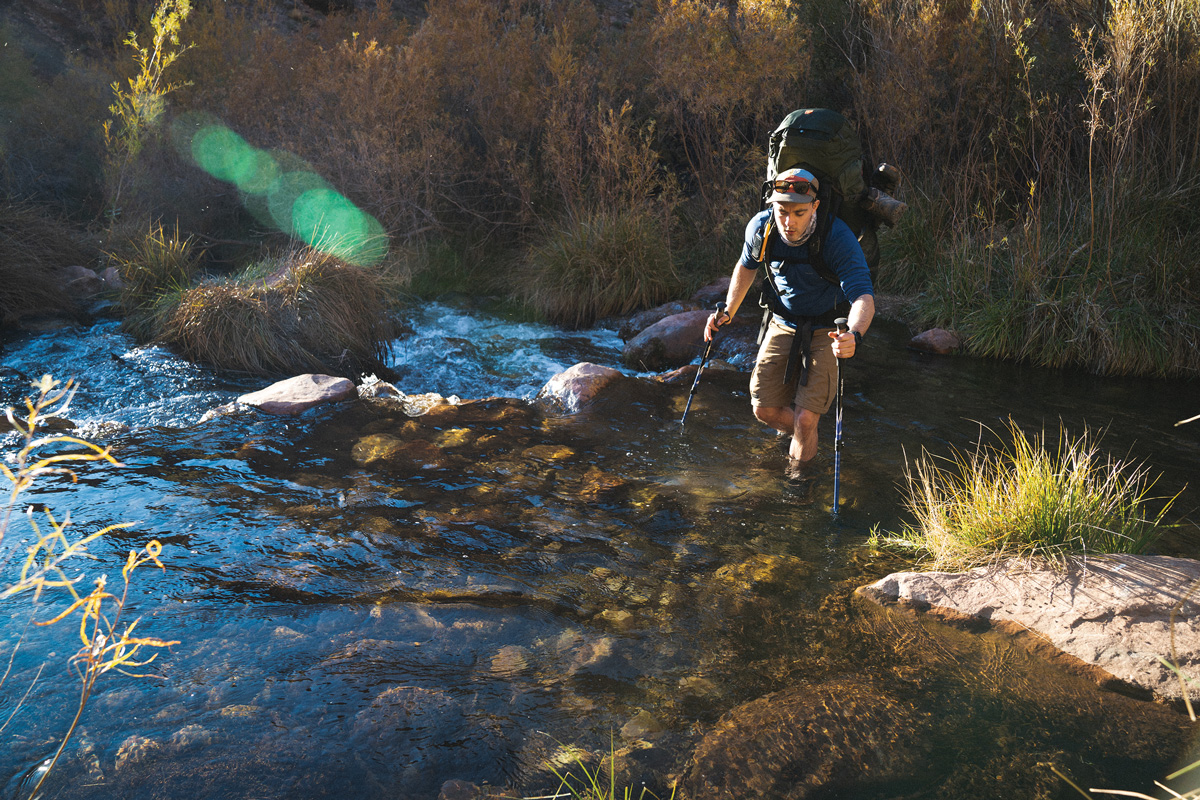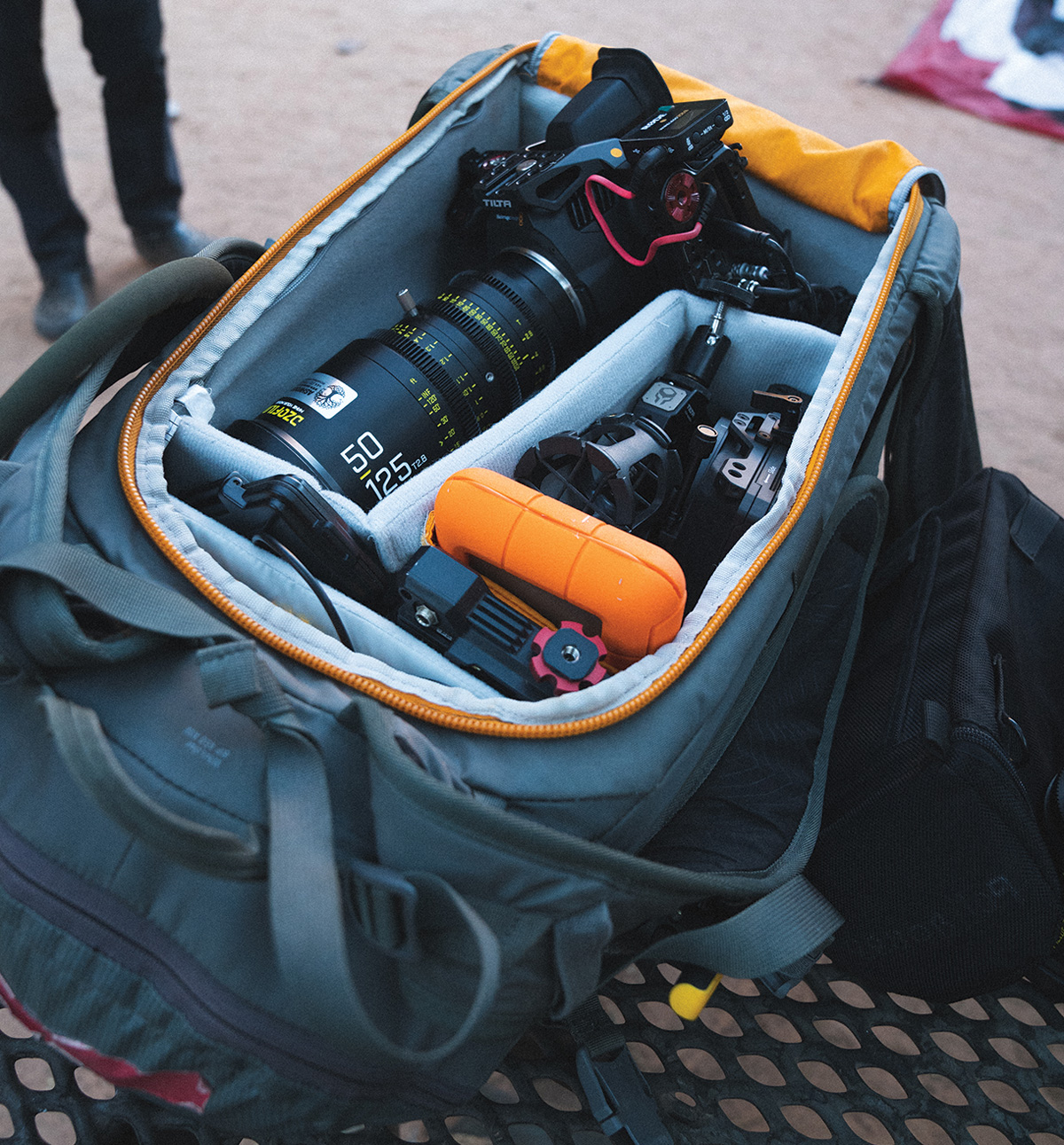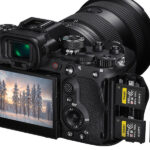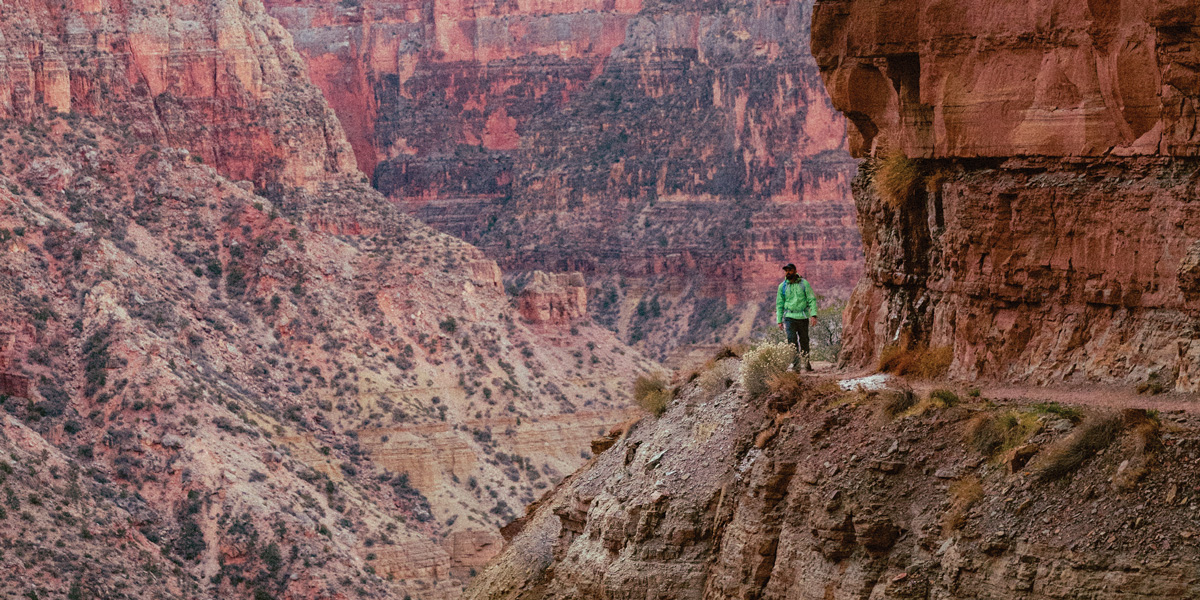
Off the beaten track
Posted on Jan 10, 2024 by Samara Husbands
When trekking through the Arizona wilderness for an incredible five-day shoot, Blackmagic Pocket Cinema Cameras proved rugged yet light companions
Advertisement feature
There are big challenges when you decide to trek the Grand Canyon for five days, both physically and mentally. But this arduous journey is just one of five feats of endurance that athlete Leo Gripari undertook to raise funds for sustainable water projects in Uganda.
Documenting his journey were director Charli Doherty, DOP Richard Jephcote and Tom Neish of production company Biscuit Bunker, who travelled every step of the Grand Canyon with him as part of their documentary film Maji.
The strikingly visual film tells a story of Gripari’s gruelling efforts across five continents, as well as the broader issues around water sustainability and how it affects local communities – and on a global level. Charged with filming the epic journey, Jephcote talks us through everything he had to take in his kitbag on the Grand Canyon section of the trip.
Grand tour
Slogging through the wilderness, the key kit concerns are weight, battery life and media as there’s nowhere to charge a battery or power a laptop.
The whole trip is built around how much a team can carry. You are expected to take your tent, sleeping bag, clothes, food and water for the full five days.
As we were trekking in November, starting and ending most days in the dark, we needed a full range of warm winter clothing, along with shorts and a T-shirt for the daytime.
Everything we needed for filming was in addition to what we had to carry to survive. So while trekking equipment is purpose-built to be light, DZOFilm lenses and V-Lock batteries aren’t.
We also needed the camera built and ready to go, working within a strict timeline to hit all our trek milestones. On top of this, creative decisions made for the rest of the film had to continue throughout so this challenge didn’t feel removed from the style established elsewhere. For example, lens choice should be consistent.
Fundamentally, you make better creative decisions when you’re not exhausted from lumbering around kit all day, so we were keen to find a perfect middle ground of production value versus weight.
With all that considered, in my bag was a Blackmagic Pocket Cinema Camera 6K Pro kitted up as a shoulder rig with a DZOFilm 20-55mm T2.8 Pictor Zoom, monitor, filters and V-Lock batteries.
Producer Tom Neish was carrying a DZOFilm 50-125mm T.2.8 Pictor Zoom, drives and a lightweight Benro tripod. That left the director, Charli, carrying a Pocket Cinema Camera 4K with a Meike prime lens on a DJI Ronin RS 2 motorised gimbal.
The recommended weight for trekking in the canyon is up to a maximum of 18kg, but we were each carrying closer to 25kg.
Most of our filming was a case of me throwing the Cinesaddle down and unzipping the Blackmagic 6K Pro, shooting quickly then moving on.
There were no retakes or covering a particular scene from different angles. We didn’t have the time to do that and complete the day’s trek before nightfall. Our guide was pretty strict, and of course we needed to hit all the targets of the trek – from the South Rim to the North Rim and back again in just five days.
The camera team was also racing back and forth to leapfrog Gripari and get shots ahead and behind him. All the creative decisions about shots are being made in the moment. There’s no recce, no pausing and no doubling back to get the shot.
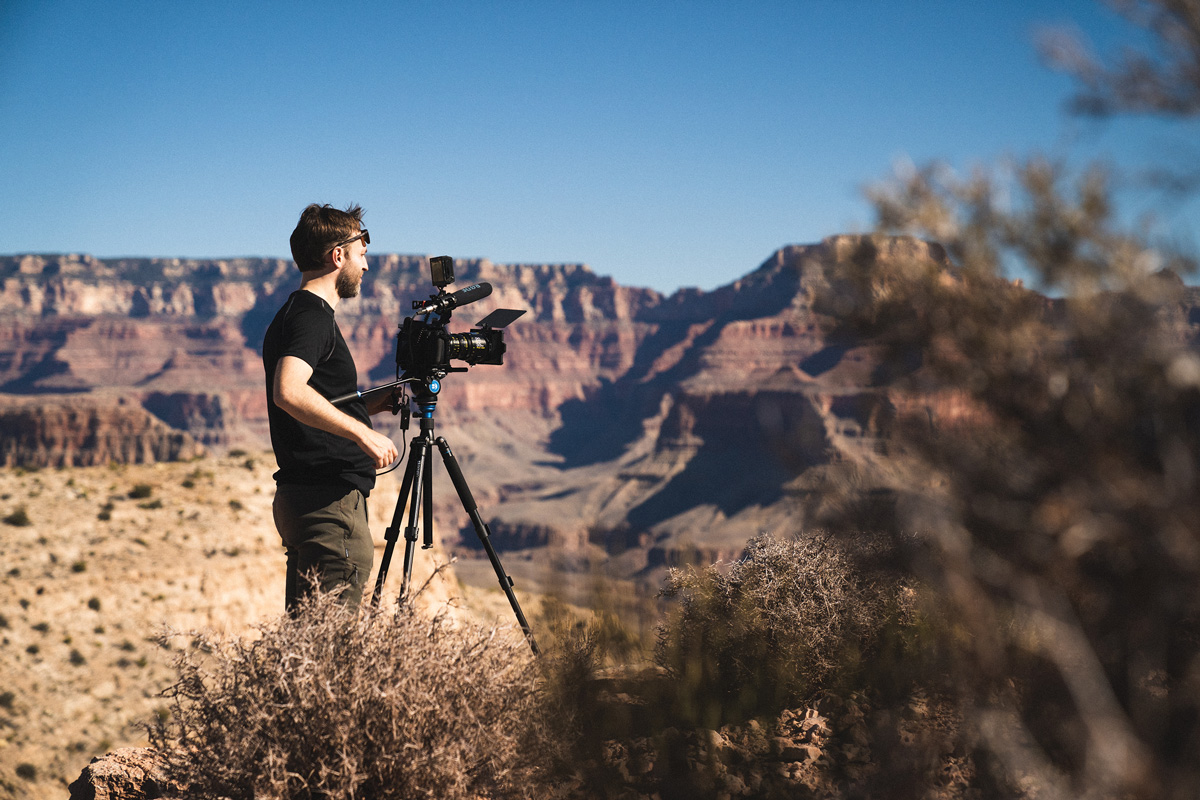
We downloaded all our cards to two Lacie Boss SSDs, which have their own batteries – and back up directly from the card reader. These also connect to an app on my phone, so I didn’t have to blindly trust that the data had been backed up.
As it was November and got cold, our limited battery supply ran the risk of draining away in the night, so all full batteries slept soundly alongside us in our sleeping bags to keep them warm. Sleep was difficult at first, but gradually got more comfortable as the shoot went on.
The 6K Pro was chosen because it’s compact, light and produces a lovely Raw image. The codec compression ratios also become an important consideration when working on documentary films like Maji.
This meant we were able to drop down to 12:1 high compression on the Blackmagic Raws for lengthy interviews, or to squeeze the last juice from a card at the end of a day. We’d then switch back to low compression for some beautiful B roll all in the same format, which is great for reacting in run-and-gun situations.
Features like internal ND filters and quick power-up may sound very basic, but they’re an absolute must for responding to unfolding events in the moment.
The rig was a mix of brands. I used Shape push-button handles for rapid adjustment and a light Tilta cage with top handle for the camera. The iFootage Magic Arms are rock solid for holding the monitor, quick to swap out and pack away. There is no brand loyalty – I use whatever works best for each element of operation.
For lens choice, the DZOFilm 20-55mm T2.8 Pictor Zoom has a nice focal range to respond to unfolding action, so it was an obvious choice to leave on the A cam.
It’s heavy, but has a lot of character compared to shooting with the more clinical stills camera lens that would have been in the same budget range. There has been great footage shot of the Grand Canyon in crisp detail, but our story is a human journey through this landscape.
One of my favourite uses of the 6K Pro came in Uganda when we needed to shoot inside a beehive. We wanted to get right into the hive and see things at bee level.
But working in a full protective beekeeping suit makes operating cameras much harder – so we stripped the camera back, adding a Laowa probe lens on a small slider which meant we could still get the shots under pressure from thousands of angry bees.
Then one of my favourite sequences: we woke before sunrise in the Wadi Rum desert in Jordan to meet up with Salem Hussain from the Bedouin community. Everything we shot that morning has incredible colours and contrast between the sand, the sky and his white clothing.
The DZOFilm lenses have proved an ideal match for the Blackmagic Pocket Cinema Camera 6K Pro for a softer, less digital feel. The whole film simply looks stunning, which makes all those arduous days trekking truly worthwhile.
Originally featured in the Jan/Feb 2024 issue of Pro Moviemaker.

